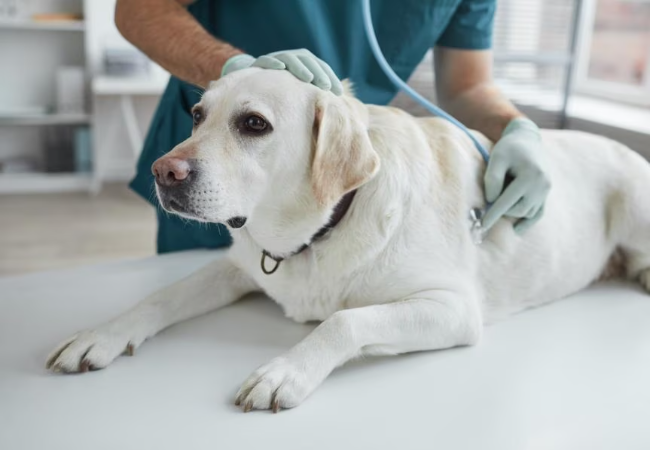Heart Attack in Dogs? Vet’s 2025 Guide to Cardiac Arrest, Signs & Emergency Care 🐶❤️🩹

In this article
Heart Attack in Dogs? Vet’s 2025 Guide to Cardiac Arrest, Signs & Emergency Care 🐶❤️🩹
By Dr. Duncan Houston BVSc
Hello—I’m Dr Duncan Houston BVSc, veterinarian and Ask A Vet founder. While “heart attacks” (myocardial infarctions) are very rare in dogs, sudden cardiac arrest—when the heart and breathing stop—is a true veterinary emergency. This vet‑approved guide explains:
- Difference between heart attack and cardiac arrest in dogs
- Common causes and risk factors
- Key signs to recognize
- Emergency response and CPR basics
- Diagnostics, treatment, and recovery
- Preventive care and owner preparation
1. Heart Attack vs. Cardiac Arrest
Dogs rarely suffer a true myocardial infarction, which requires coronary plaque blockages. Instead, most sudden collapses are due to cardiac arrest, often from arrhythmias like ventricular fibrillation or severe heart failure.
2. What Causes Cardiac Arrest?
- Severe heart disease—dilated cardiomyopathy, valve failure, congenital defects
- Arrhythmias like V-fib or A-fib—spiraling electrical activity in the heart
- Hypoxia from heartworm, respiratory failure, or poisoning
- Other triggers: severe trauma, shock, toxins, metabolic crises like diabetic ketoacidosis
3. Recognizing the Signs
- Sudden collapse, unresponsiveness, no pulse or heartbeat
- Blue or pale gums, dilated pupils, no breathing
- Rapid or labored (gasping) respirations beforehand
- Weakness, vomiting, rigidity, disorientation, seizure may precede an arrest
4. What to Do Immediately
- 📞 Call your vet or emergency clinic—bring them while performing first aid
- 🛠️ CPR using CAB (compressions, airway, breathing): place hands over the widest part of chest and compress at 100–120/min
- Breathe into the dog’s nose gently every 10 compressions
- Continue until vets take over—early resuscitation increases survival odds
5. Veterinary Diagnostics & Care
- Physical exam for heartbeat, breathing, mucous membranes
- EKG/ECG to detect arrhythmias; echocardiogram to assess heart structure
- Chest X-rays and ultrasound for fluid, heart size, lung changes
- Bloodwork: troponin, electrolytes, organ function, clotting—especially after CPR
- Address underlying problems (e.g., CHF medications, arrhythmia control, treat toxin effects)
6. Recovery & Prognosis
Survival after cardiac arrest is low if CPR extends beyond 4–6 minutes and the underlying disease is severe. Dogs who recover often need hospitalization, oxygen, IV fluids, anti-arrhythmic drugs, and continuous monitoring.
7. Preventing a Collapse
- 💉 Regular heart screenings—auscultation, EKG, echo for predisposed breeds: Dobermans, Boxers (DCM), Cavaliers (valve disease)
- 🏃♂️ Maintain healthy weight, exercise, and treat heartworm
- 🩺 Manage chronic illnesses (diabetes, Cushing’s, kidney disease)
- 🚨 Consider learning canine CPR—ask your vet for training resources
📌 Final Thoughts from a Vet
Dog “heart attacks” are rare, but cardiac arrest is a life-threatening emergency. Recognizing signs and acting fast—calling your vet, delivering quality CPR, and ensuring post-rescue care—can save lives. At Ask A Vet, we support you with emergency protocols, arrhythmia trackers, CPR guides, and preparation tools so you’re ready. You and your dog deserve a fighting chance. 🐾❤️






